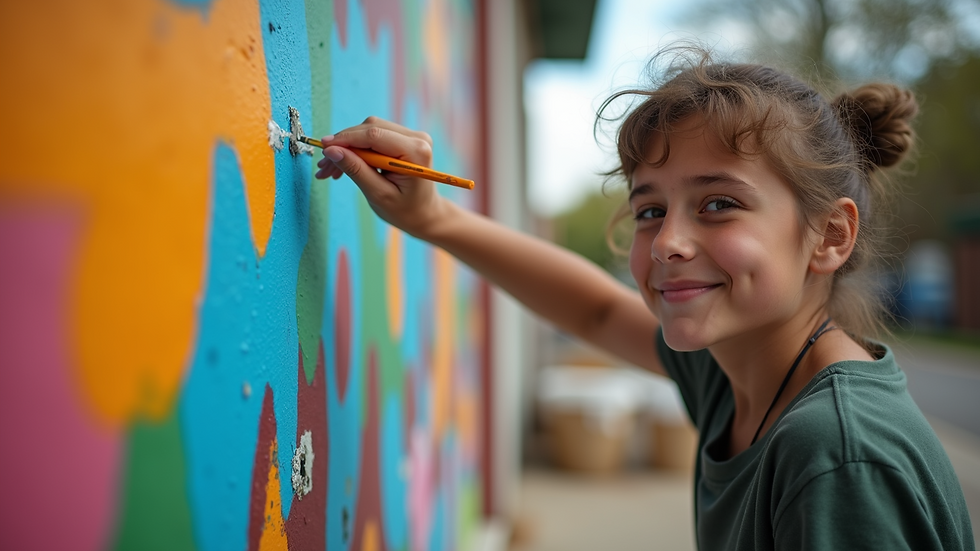Innovative Teaching Strategies in Art Education Today
- snydroski
- Oct 5
- 3 min read
Art education is evolving rapidly. As educators, we must adapt to new technologies, diverse student needs, and changing cultural landscapes. Innovative teaching strategies can enhance creativity and engagement in the classroom. This blog post explores some of the most effective methods currently being used in art education.
Art education is not just about teaching techniques. It is about fostering creativity, critical thinking, and self-expression. In today's world, students need more than just traditional skills. They need to learn how to think outside the box and express their ideas in unique ways.
In this post, we will discuss several innovative teaching strategies that can transform art education. These strategies include project-based learning, technology integration, collaborative art projects, and the use of community resources. Each method offers unique benefits and can be tailored to fit different classroom environments.
Project-Based Learning
Project-based learning (PBL) is an effective way to engage students in art education. This approach allows students to work on real-world projects that require critical thinking and creativity.
Benefits of Project-Based Learning
Engagement: Students are more engaged when they work on projects that interest them.
Collaboration: PBL encourages teamwork and collaboration among students.
Real-World Skills: Students learn skills that are applicable outside the classroom.
Example of Project-Based Learning in Art
A great example of PBL in art education is a community mural project. Students can collaborate to design and paint a mural that reflects their community's culture and values. This project not only teaches artistic skills but also fosters a sense of community and belonging.
Technology Integration
Incorporating technology into art education can enhance creativity and engagement. Digital tools can help students explore new mediums and techniques.
Benefits of Technology Integration
Access to Resources: Students can access a wealth of online resources and tutorials.
Creative Expression: Digital tools allow for new forms of artistic expression.
Collaboration: Technology can facilitate collaboration among students, even if they are not in the same location.
Example of Technology Integration in Art
Using digital art software, students can create animations or graphic designs. They can also use social media platforms to share their work and receive feedback from a wider audience. This not only enhances their skills but also builds their confidence as artists.
Collaborative Art Projects
Collaboration is a powerful tool in art education. Working together on art projects can help students learn from each other and develop their skills.
Benefits of Collaborative Art Projects
Skill Sharing: Students can share their unique skills and techniques with one another.
Diverse Perspectives: Collaboration brings together different viewpoints, enriching the creative process.
Community Building: Working together fosters a sense of community and belonging among students.
Example of Collaborative Art Projects
A collaborative art project could involve students creating a large-scale installation. Each student could contribute a piece that reflects their individual style, while also working together to create a cohesive final product. This not only showcases their talents but also teaches them the importance of teamwork.
Use of Community Resources
Engaging with the community can enhance art education. Local artists, galleries, and cultural organizations can provide valuable resources and experiences for students.
Benefits of Using Community Resources
Real-World Connections: Students can connect their learning to the real world.
Inspiration: Community resources can inspire students and expose them to new ideas.
Networking: Students can build relationships with local artists and organizations.
Example of Using Community Resources in Art
Organizing field trips to local galleries or artist studios can provide students with firsthand experience. They can meet artists, learn about their processes, and gain inspiration for their own work. Additionally, inviting local artists to conduct workshops can offer students unique insights and skills.
Conclusion: Embracing Innovation in Art Education
Art education is a dynamic field that requires constant adaptation and innovation. By embracing new teaching strategies, educators can create engaging and meaningful experiences for their students.
Whether through project-based learning, technology integration, collaborative projects, or community engagement, there are countless ways to enhance art education. The key is to remain open to new ideas and approaches.
As we move forward, let us continue to inspire creativity and foster a love for art in our students. By doing so, we prepare them not only to be skilled artists but also to be innovative thinkers and problem solvers in a rapidly changing world.



Comments